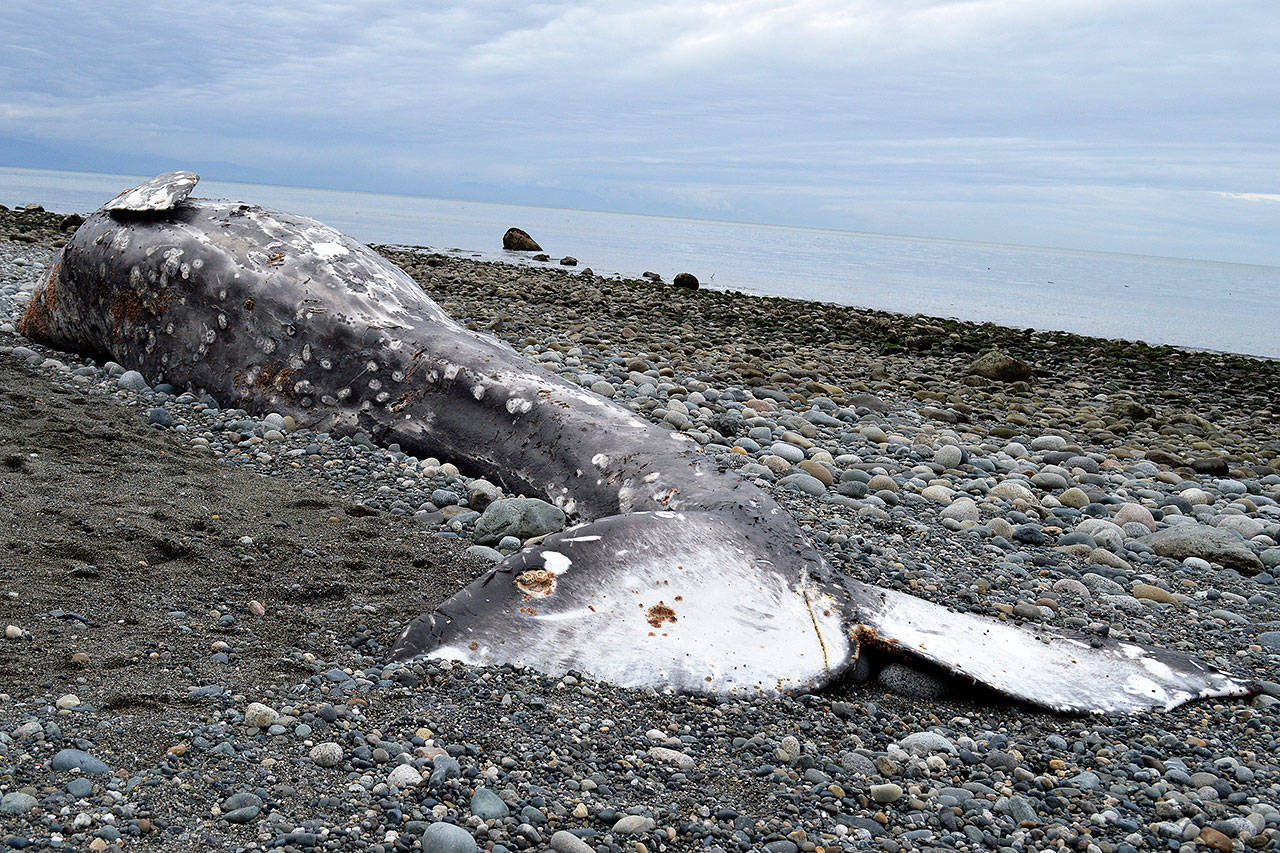Visitors to West Beach on North Whidbey this week may have noticed a rather large, and eventually odoriferous, addition to its shores. A deceased female juvenile gray whale washed up on Tuesday, about a mile south of the Hastie Lake parking lot.
Local volunteers from the Marine Mammal Stranding Network did a cursory evaluation on Tuesday and on Thursday a team from Cascadia Research Collective in Olympia completed a full necropsy, which is an animal autopsy.
“It was very, very thin,” said Jessie Huggins, stranding coordinator for Cascadia. “I’m sure malnutrition played a very big part in the whale’s death.”
The necropsy took a crew of almost 15 people around three hours to complete. Researchers peeled back the layer of blubber and took samples from every tissue, Huggins said. She said those samples will be tested for signs of disease, parasites and chemical contaminates. The whoosh of the released gases could easily be heard as the blubber was first cut into, and those gases were pungent.
Most people present did not stand downwind from the animal.
Huggins said the late stage of malnutrition observed in the whale suggested it didn’t get enough to eat last summer, which caused it to struggle during the spring northern migration. Every year, nearly 24,000 gray whales travel from the cold waters of the Arctic to Baja, Mexico, and back, according to the National Oceanic and Atmospheric Administration website. This 12,000-mile journey is the longest migration of any mammal.
However, two small groups of grays typically stay in Washington’s waters through the summer, according to the Orca Network website. Around 10 of these whales return most years to the waters around Whidbey Island and stay for several months. Huggins said it is unlikely the female examined Thursday was part of the group of “regular” grays that have been observed in the Puget Sound area.
Gray whales are around 15-feet long at birth and can grow to a length of between 40 and 45 feet. The young female that washed up Tuesday was around 29 feet long.
On average, two to three gray whale strandings happen in the Puget Sound area every year, Huggins said, and five to six happen across the state. She said when these animals wash ashore, it provides a rare opportunity to study the creatures up close.
All the data collected, especially signs of human impacts, can prove useful for research purposes.
“Anything we know about them helps with management decisions and conservation,” she said.
The carcass of the animal will remain where it is, although it is illegal to take any part of the whale without certification to do so from the NOAA. Stranded marine mammals on Whidbey Island can be reported either to the Orca Network at 360-661-3739 or to Stranding Network Coordinator Sandy Dubpernell at 360-678-3765.



